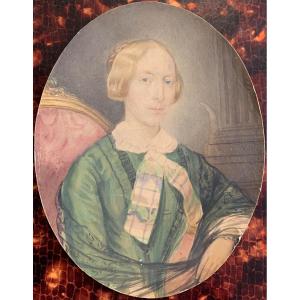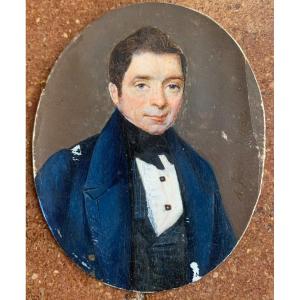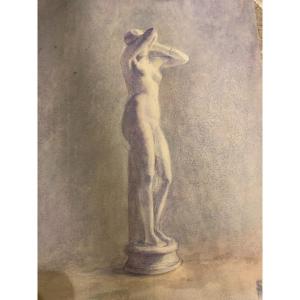Dimensions: 68 cm x 50 cm
Apollino degli Uffizi
Technique: Charcoal on paper
The Apollino, also known as the Apollino degli Uffizi, is a famous marble statue depicting the youthful god Apollo. A plaster cast of this statue is part of the same collection series.
The Apollino was moved to Rome and placed in the Villa Medici when it became a Medici residence. Purchased by Cardinal Ferdinando de' Medici in 1576, the villa became a key center for collecting and displaying ancient art.
Cosimo III de' Medici, Grand Duke of Tuscany from 1670 to 1723, played a crucial role in the statue's history. He worked to expand the Medici art collection and ordered the transfer of many artworks from the Villa Medici to Florence, enriching the Uffizi Gallery's holdings.
In 1677, the Apollino was relocated to the Uffizi Gallery, one of the world's most prestigious museums, created to house the Medici art collections. Cosimo III moved the statue from the Villa Medici's private rooms to the Uffizi's Tribune, an octagonal room designed by Bernardo Buontalenti in 1584 to display the collection's most prized works. The Apollino became a highlight of the Tribune due to its beauty and significance.
During the Napoleonic spoliations, the Apollino was among the artworks looted by Napoleon's forces. In 1800, the statue was taken to France and displayed at the Louvre Museum in Paris. Before this, there was an attempt to hide the statue in Palermo to protect it from Napoleon’s troops, but it ultimately failed. This looting was part of the widespread plunder of European art by Napoleon. After Napoleon's fall, the sculptor Antonio Canova played a key role in negotiating the return of many stolen artworks, including the Apollino. Thanks to Canova's efforts, the statue was returned to the Uffizi Gallery in 1815, where it remains today.
This drawing is part of a collection of 19th-century charcoal drawings from the Accademia Albertina of Turin, showcasing the use of black and brown charcoal on paper to represent classic sculptures.
This 19th-century Italian drawing of a classical standing sculpture in plaster showcases expert chiaroscuro modeling in black and brown charcoal on paper.


















































 Le Magazine de PROANTIC
Le Magazine de PROANTIC TRÉSORS Magazine
TRÉSORS Magazine Rivista Artiquariato
Rivista Artiquariato